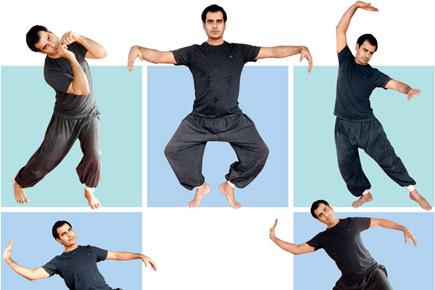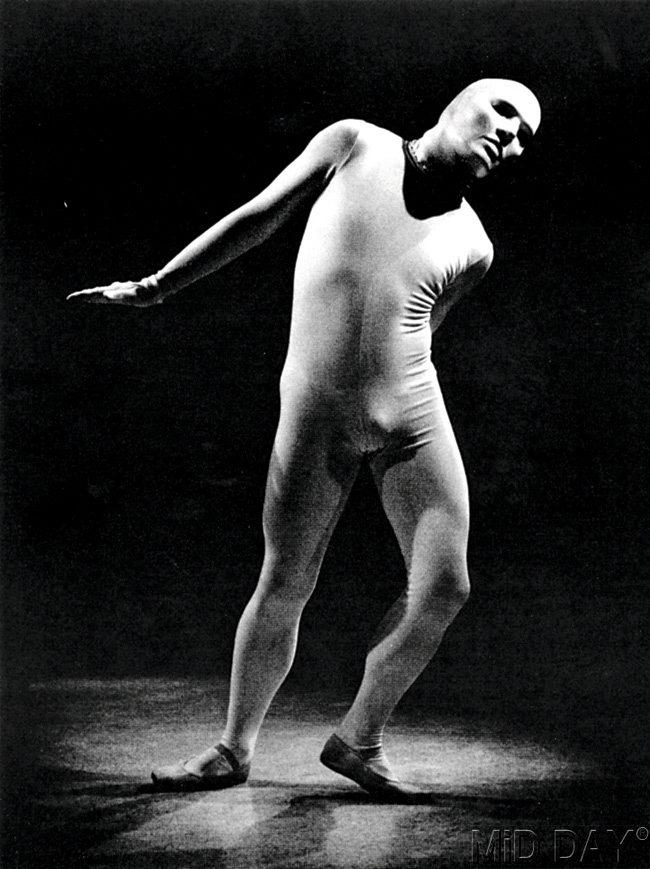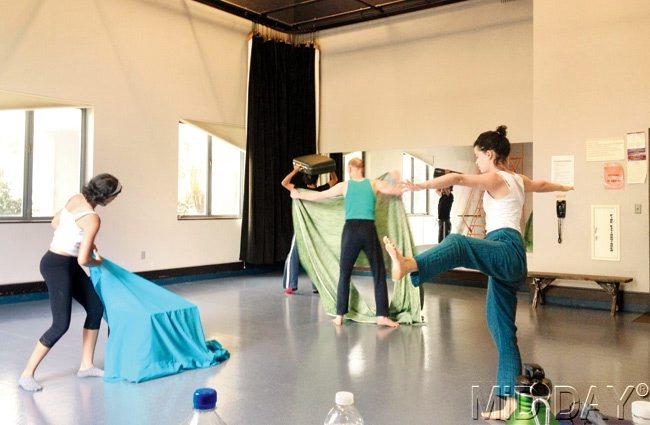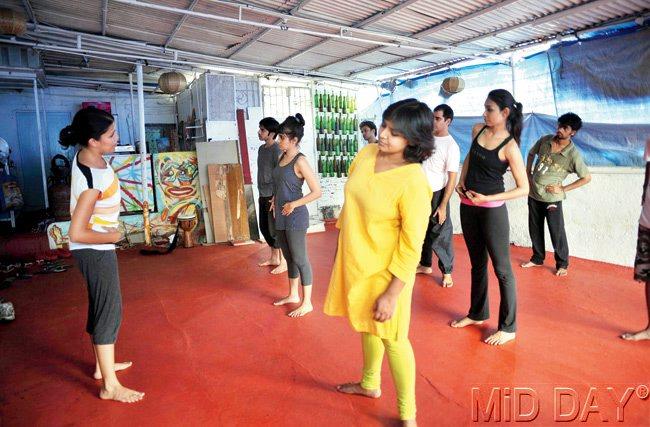Corporeal Mime is a rigorous form of theatre developed by French film and theatre actor Étienne Decroux that focusses on utilising the body optimally on stage. Now, enthusiasts can attend a workshop by Irfana Majumdar, a trained research assistant to Thomas Leabhart, one of Decroux’ senior-most students

Gaurav Saini
Corporeal Mime can be described as a technique that allows the performer to do what he wants, not what he can. The rigorous form of theatre focusses on optimally utilising the body on stage and was developed in France in the 1920s by Étienne Decroux, a French film and theatre actor, who trained with the legendary French dramatist Jacques Copeau.
ADVERTISEMENT

Gaurav Saini, who assists Irfana Majumdar, enacting the movements involved in Corporeal Mime. Pics/Pradeep Dhivar
Decroux spent half his lifetime developing the art form aimed at placing drama within the human body rather than substituting gestures for speech. He wanted to put the actor at the centre of creation and performance, and the body at the centre of the actor’s work, thus enabling the actor to be more than just an interpreter of the text and instead become a creator.

A Corporeal Mime act in progress
Some of the core principles that the actor applies to the physical movements are pause, hesitation, weight, resistance and surprise.
Corporeal Mime differs from traditional mime (that uses gestures in the place of speech) by placing drama within the body and helping performers understand impulses and not just text and action. It is believed to lead to greater control, flexibility, strength and imagination.

A mime rehearsal
The technique consists of a series of articulations of the body, a study of how the body can move and of movements combined progressively or in contradiction. The emphasis is on the trunk, with the hands and legs playing a
secondary role.
Try your hand at it
Now, you can learn this innovative art form in the city by attending a workshop conducted by the Bandra-based Collage Collective Studio and the Varanasi-based Nirman Theatre Studio. Irfana Majumdar, director of Nirman Theatre Studio as well as a theatre artiste, documentary filmmaker and Corporeal Mime teacher, will conduct the session. She trained as a research assistant to Thomas Leabhart, one of Decroux’ senior-most students.

Gaurav Saini, who assists Irfana Majumdar, depicting a step. Pic/Pradeep Dhivar
Explaining the concept behind Corporeal Mime, Majumdar states, “The actor’s body is the most important element in Corporeal Mime. The form itself is about exploring the inner impulse a performer feels and expressing it with precision and clarity, using the body’s sculptural quality on stage.”
She differentiates it from traditional mime by emphasising that mime uses gestures to replace speech while Corporeal Mime is more poetic and abstract and tries to go beyond the realm of everyday life and reach the inner realm of man. “It is trying to express thoughts, concepts, emotions, but by developing a deep connection between the body and the inner world of the actor, and stresses on being able to use the body fully, especially the trunk.”

Majumdar elaborates that in this form, the body is higher in importance than other elements: “Text is just one of the elements available to the actor. It is no longer presumed to be the structure of the piece that dictates the action and controls the actor. The actor’s body is much higher in importance than other elements. To be able to use the body gives the actor a complete freedom of expression.”
Majumdar has lived and worked in the US and India. Among other things, she has trained in Hindustani Classical music, direction and performance at the University of Chicago, various forms of theatre such as Suzuki and Viewpoints, T’Chi Clown (an approach to clowning using principles of Tai Chi Chuan), Aikido, Pilates, Body-Mind Centering, and Contact Improvisation.
Who is it for?
Anyone with a professional interest in theatre, dance, or related areas can participate. No prior training is required but a commitment to physical training and exploration is necessary.
Majumdar admits that Corporeal Mime practitioners in India are very few. “The absence of trained artistes or schools has limited its spread across India,” she observes.
The workshop aims to be an introductory session on Corporeal Mime and will be faithful to the methods used by Decroux and Leabhart. But Majumdar does intend to add some local references: “Because of my interests and the location of the workshop, there will be many references to other forms of training and practice, including Indian dance, theatre, and martial arts forms.”
 Subscribe today by clicking the link and stay updated with the latest news!" Click here!
Subscribe today by clicking the link and stay updated with the latest news!" Click here!






